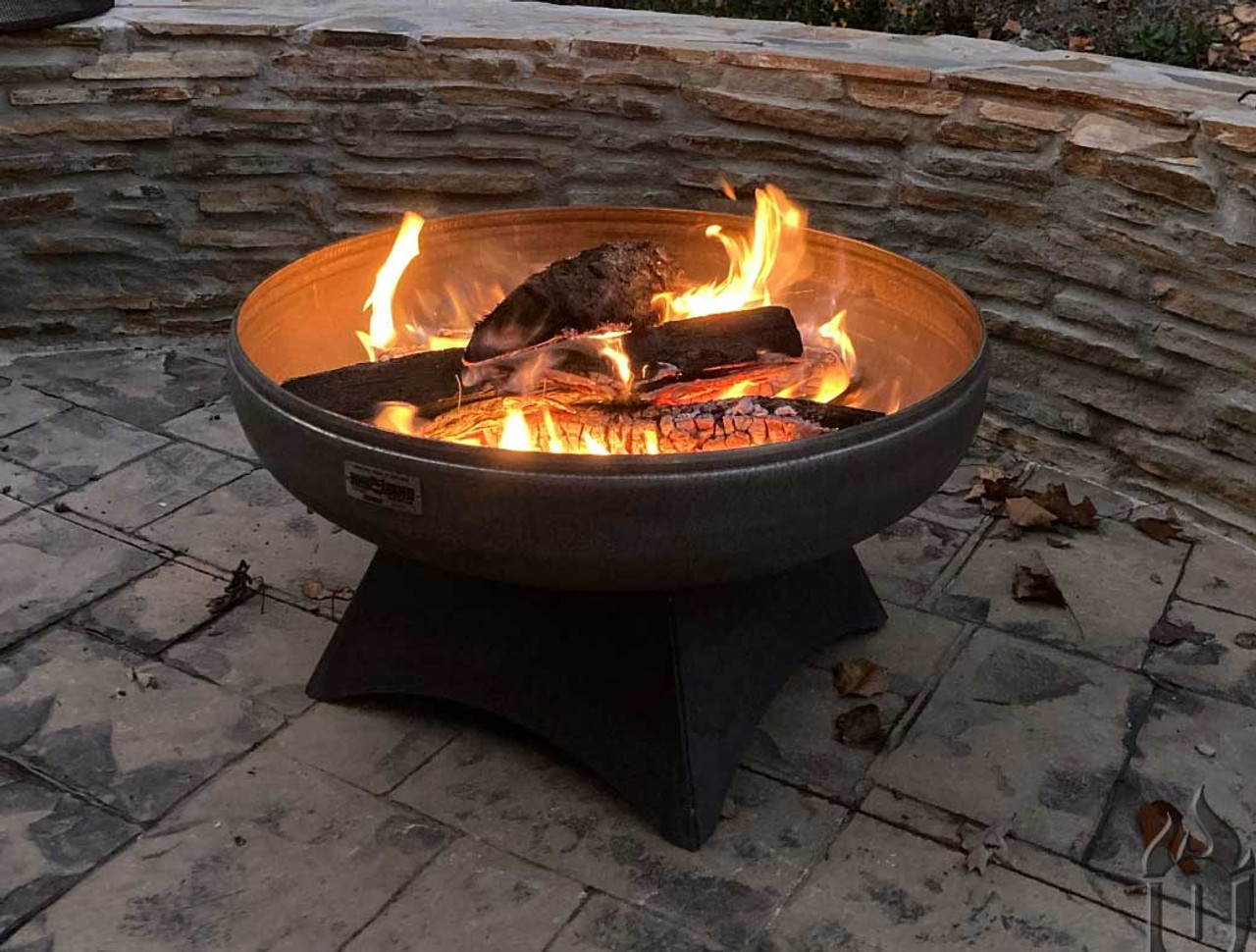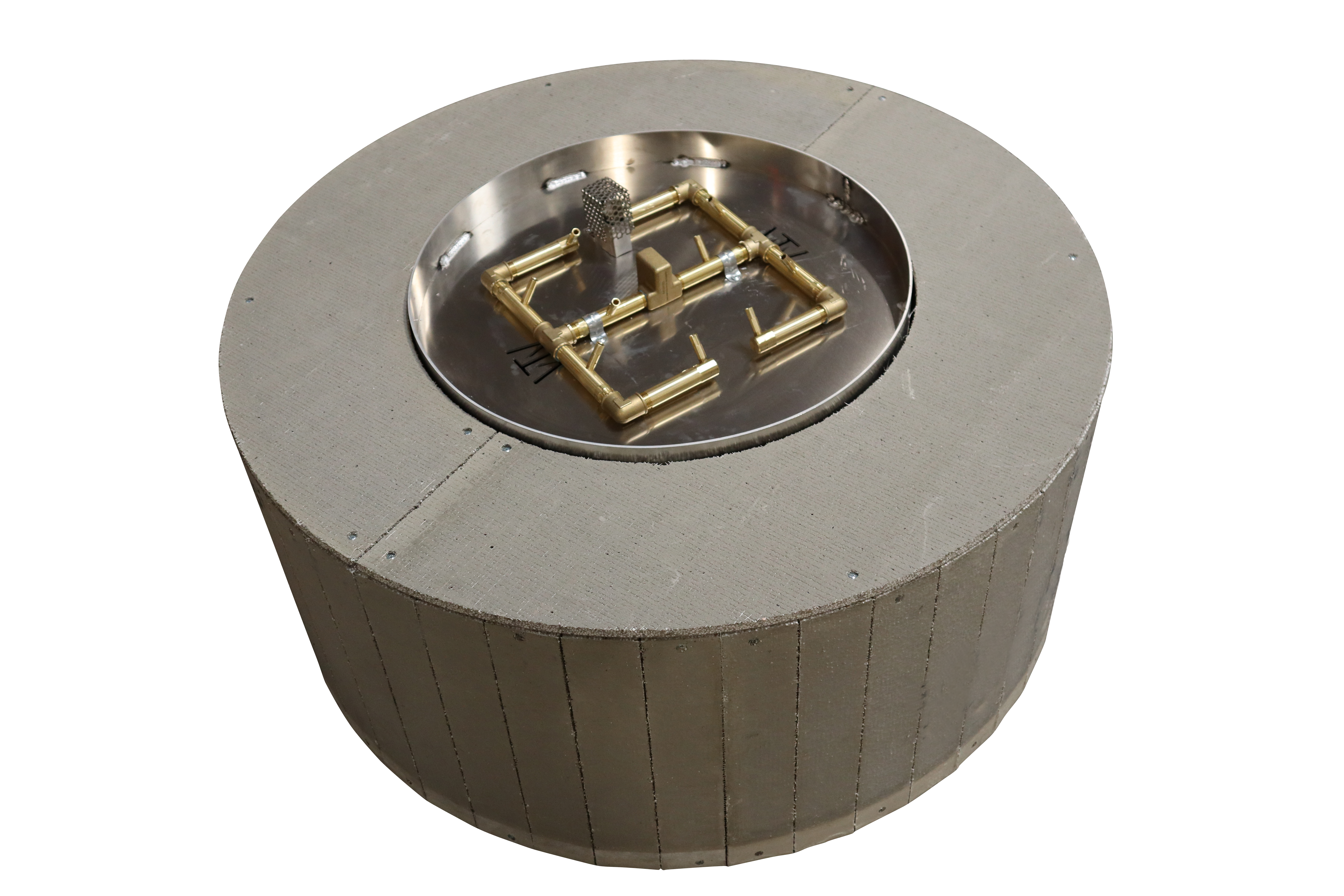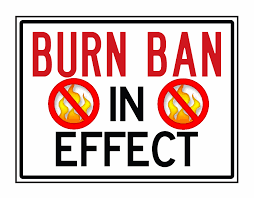4 Common Fire Pit Laws and Regulations You Should Know As a Homeowner
Posted by The Fire Pit Store on 24th Oct 2024
There’s nothing quite like gathering around a fire pit in your backyard, enjoying the warmth and ambiance with friends and family. While fire pits are great for creating cozy outdoor spaces, there are rules to follow when it comes to safety and legal considerations. If you're a homeowner, it's important to understand fire pit laws and regulations in your area to avoid fines, keep your family safe, and be a good neighbor. Here are four common fire pit laws and regulations to be aware of, along with some helpful tips for compliance.
1. Location Matters: How Far Should Your Fire Pit Be from Structures?
One of the most important regulations surrounding fire pits is where they can be placed. Most local authorities have rules about how far away your fire pit should be from structures like houses, sheds, fences, and even trees. This is to reduce the risk of accidental fires spreading from the pit to nearby buildings or vegetation.
- Typical Requirements: In many areas, the minimum distance is around 10 to 25 feet from any structure. This includes your house, garage, or any other flammable structures. It’s also wise to keep the fire pit at least 10 feet away from property lines and any overhanging branches or power lines.
- Why It Matters: Placing a fire pit too close to a building or tree could result in heat damage, accidental fire, or smoke issues. When a fire pit is too near a wooden fence, for example, the heat could cause it to catch fire. Similarly, if flames or embers reach low-hanging branches, they could ignite.
- Tips for Compliance: Always measure the distance before setting up your fire pit. Some homeowners mark the area with stones or pavers to create a visual boundary, ensuring that the fire stays within a safe range. If you’re not sure about the regulations in your area, check with your local fire department or city planning office for specific guidelines.
2. Burn Bans and Restrictions: When You Can and Can’t Use Your Fire Pit
Another key consideration for fire pit use is knowing when it’s legal to have a fire in your backyard. Depending on where you live, there may be seasonal or temporary burn bans in place, especially during times of high wildfire risk.
- Burn Bans Explained: Burn bans are usually implemented during dry seasons, such as summer or late spring, when there’s a higher risk of wildfires. They can restrict or prohibit all open flames, including those in fire pits, due to the danger posed by stray sparks or embers.
- Local Ordinances Vary: The specifics can vary greatly from one place to another. For example, some cities may allow gas fire pits during a burn ban but prohibit wood-burning fire pits, as gas flames are easier to control and don’t produce embers. In other areas, all types of outdoor fires may be banned during certain periods.
- How to Stay Informed: Before lighting your fire pit, check for any local burn bans or restrictions that might be in effect. This information is often available on your local fire department’s website or through community alert systems. Sign up for text or email alerts to stay informed of any changes.
- Consequences for Violations: Ignoring burn bans can result in hefty fines and could even lead to being held liable for any damages if your fire spreads. It’s simply not worth the risk, so ensure you comply before striking a match.
3. The Type of Fuel You Use Matters: Regulations on What You Can Burn
Not all firewood is created equal when it comes to fire pits. Many areas have regulations about what types of materials you can burn, and for good reason. Burning the wrong materials can release harmful toxins into the air and create safety hazards.
- Approved Materials: Generally, it’s best to use seasoned hardwoods like oak, hickory, or maple in a wood burning fire pit. These woods burn cleaner, hotter, and with less smoke than softwoods like pine or cedar. In
 some areas, you may only be allowed to burn natural materials, such as untreated wood, due to environmental concerns.
some areas, you may only be allowed to burn natural materials, such as untreated wood, due to environmental concerns.
- Prohibited Materials: It’s illegal in many places to burn garbage, pressure-treated wood, or construction materials like plywood. These items can release toxic fumes when burned, which can be harmful to both people and pets. Additionally, some communities restrict the use of softwoods because they produce more smoke and creosote, increasing the risk of chimney fires if used in outdoor fireplaces.
- Why It Matters: Burning prohibited materials can result in fines and penalties, and can also harm the environment. For example, pressure-treated wood contains chemicals that can release toxic substances when burned, potentially polluting the air and groundwater.
- Tips for Burning Safely: Stick to burning clean, dry wood, and avoid anything that’s painted, stained, or chemically treated. For a cleaner burn, you can opt for specially made fire pit logs or bioethanol, which produce less smoke and are more eco-friendly.
4. Supervision and Safety Measures: Rules for Managing Your Fire Pit
While having a fire pit can be a wonderful addition to your backyard, it's essential to always prioritize safety. Most local ordinances include guidelines for supervising the fire and having proper safety equipment on hand.
- Supervision Requirements: Many areas have regulations stating that a fire should never be left unattended. There must be an adult present at all times while the fire is burning, and it should be fully extinguished before going inside. Even if the flames seem to have died down, smoldering embers can reignite and cause fires.
- Extinguishing Equipment: You should always have a way to quickly extinguish the fire if necessary. This could mean having a garden hose, a bucket of sand, or a fire extinguisher nearby. Some regions may even require this equipment to be within a certain distance from the fire pit at all times.
- Covering the Fire Pit: Using a screen or spark guard over the fire pit is a great way to prevent embers from escaping and starting an accidental fire. Some local regulations may require you to use a cover, especially in areas where wildfires are a concern.
- Noise and Smoke Considerations: While not always a law, being considerate of your neighbors is a good practice. Excessive smoke can drift into other yards and cause discomfort or health issues, particularly for people with asthma or other respiratory conditions. Likewise, keep noise levels reasonable, especially if you’re having a late-night gathering around the fire.
Additional Tips for Responsible Fire Pit Use
In addition to understanding these common regulations, there are some general best practices that can help you enjoy your fire pit safely and responsibly:
- Check Local Laws Regularly: Fire pit regulations can change, especially if there are new environmental concerns or safety issues in the community. Make it a habit to review the local rules before using your fire pit each season.
- Choose the Right Fire Pit for Your Space: If you have a smaller yard, consider getting a smaller fire pit or a portable one that you can move away from structures as needed. Built-in fire pits are great for larger spaces but should be planned with location guidelines in mind.
- Consider Alternatives During High-Risk Seasons: When burn bans are in effect, it doesn’t mean you have to give up the ambiance of a fire pit entirely. Look into gas or propane fire pits that may still be permitted during
 these times, as they don’t produce embers that could start a fire.
these times, as they don’t produce embers that could start a fire.
- Educate Your Family on Fire Pit Safety: Make sure everyone in your household, especially children, understands the rules for using the fire pit. Set boundaries about who can light the fire and what materials can be burned, and teach everyone how to properly extinguish the fire.
- Mind the Wind: Windy conditions can make it easier for sparks to escape and spread. Avoid lighting a fire if it's particularly windy, or use a windscreen to help control the direction of the smoke and heat.
Why Following Fire Pit Regulations is Important
Following fire pit regulations isn’t just about avoiding fines—it’s about being a responsible homeowner and keeping your family and community safe. A small mistake with a fire pit can have serious consequences, such as accidental burns, property damage, or even wildfires. By understanding and following the laws, you’ll reduce risks and create a safe environment for everyone.
Moreover, being mindful of fire pit rules can also help in maintaining good relationships with neighbors. No one wants to deal with the hassle of smoke drifting into their home or the worry of a fire spreading. Keeping your fire pit at a safe distance, burning only appropriate materials, and following safety guidelines ensures that you’re not only protecting yourself but also those living nearby.
Conclusion
A fire pit can be a wonderful addition to any backyard, providing warmth and a great setting for social gatherings. However, as a homeowner, you have the responsibility to understand and comply with local fire pit regulations. The four main areas to pay attention to are the location of the fire pit, seasonal burn bans, the type of fuel you can use, and supervision requirements.
By keeping these rules in mind, you’ll be able to enjoy your fire pit safely while being considerate of your community and environment. Always check local regulations, stay informed about burn bans, use appropriate materials for burning, and prioritize safety. With these guidelines, you can make the most of your fire pit without any unexpected surprises.


